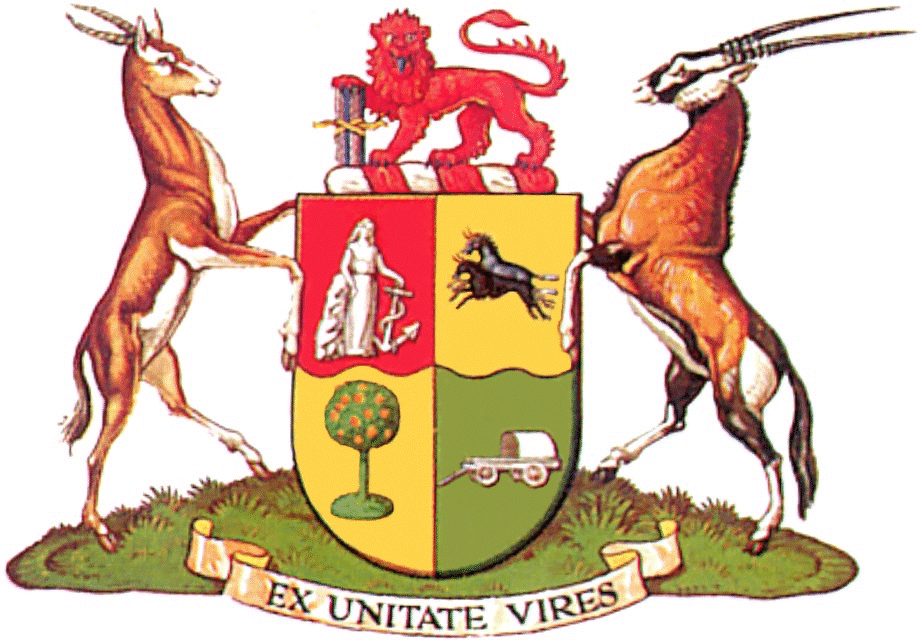

Union of South Africa
Unie van Suidafrika

The 1910 illustration of the arms of the Union was in sole use for two decades, but fell under an increasing barrage of criticism. One newspaper correspondent remarked in 1930 that the sight of the gemsbok supporter would probably cause the death of a true gemsbok! In response, the Department of the Interior applied to the College of Arms for a replica of “the true armorial bearings” of the Union.
The new drawing, while not deviating from the blazon of 1910, was much more satisfactory. The animals were more naturally drawn, and the supporters and shield rested on a grassy compartment instead of the motto scroll. The crest no longer floated in mid-air but now rested on the shield. However, the crest was still not attached to a helmet, and the supporters’ tails were still in the “coward” position. The 1910 version of the arms continued in use in the cap badges of the South African Police and the South African Railways and Harbours, and in the sleeve rank badges of military warrant officers, but for most purposes the 1930 version took its place.
Language development:
The country’s name appears at the head of this section in English and an early official form of Afrikaans, because the 1930 drawing came into use five years after the passage of the Official Languages of the Union Act of 1925, which extended the definition of “Dutch language” in the Constitution to include Afrikaans.
The pictorial postage stamps issued in 1926 (the second definitive series of the Union) bore the country’s name in either English or Afrikaans, the Afrikaans version using the form “Suidafrika”.
Flags of the Union, citizenship and franchise:
A significant outcome of the Imperial Conference of 1926 was the Balfour Declaration, which stated inter alia that Great Britain and the Dominions were “equal in status, in no way subordinate to one another” and “united by a common allegiance to the Crown”. For South Africa, this meant that it could now have its own flag. A flag (the Union Flag) was adopted under the Union Nationality and Flags Act of 1927 which came into official use on 30 May 1928. The Union’s Blue Ensign now fell away. The Union Jack was defined as denoting “the association of the Union with the other members of the group of nations constituting the British Commonwealth of Nations”, and so was flown alongside the Union Flag – usually just on special occasions, although consistently in Natal. The Union Red Ensign (like other Red Ensigns it was known affectionately as the Red Duster) continued in use as the merchant flag.
The same Act provided for a separate South African citizenship, within the wider circle of the Commonwealth association, despite concerns in some quarters that this would be an affront to the Empire.
The first change to the franchise came in 1930, when the right to vote was extended to white women, but not to women of any other race. This undermined the already precarious position of the Coloured and black male voters of the Cape Province. This women’s suffrage was not to be exercised until the general election of 1933.

Vir Afrikaans, kliek hier
Comments, queries: Mike Oettle